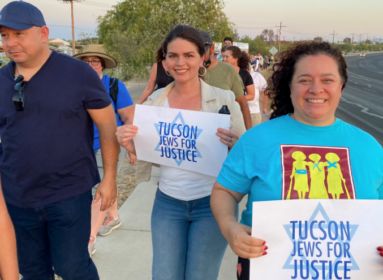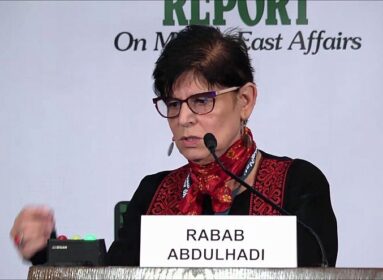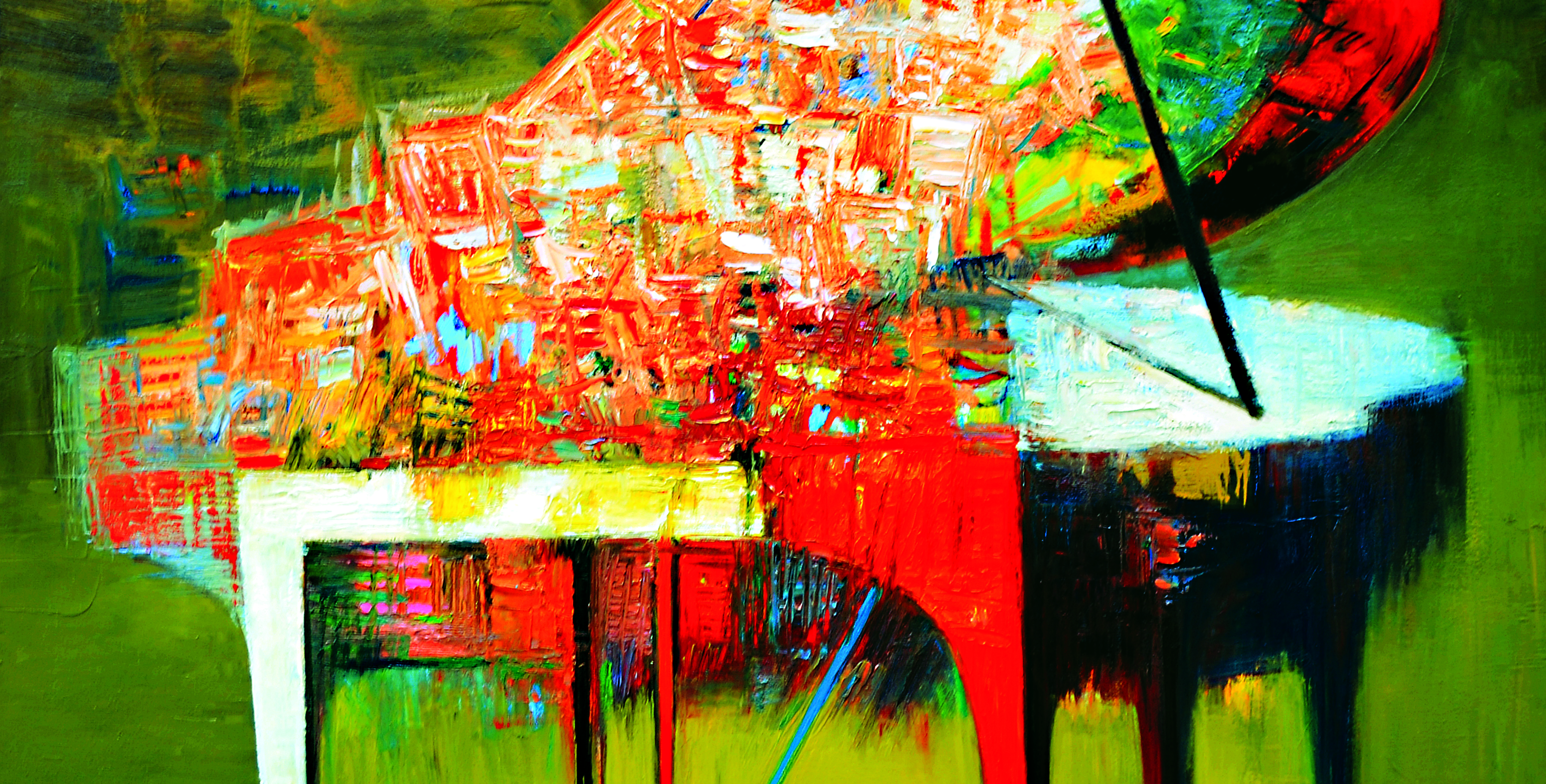
“Through their actions they have made the world a better place.”
President Donald J. Trump, April 30, 2018
In a statement issued by the White House on Monday, April 30, President Donald Trump proclaimed May Jewish Heritage Month.
In so doing, the President was following in the footsteps of his predecessors who, since George W. Bush did so in 2006, have each proclaimed May to be a month in which the nation commemorates the contributions American Jews have made to the fabric of our nation’s history, culture and society.
“Jewish Americans have helped guide the moral character of our Nation,” read the President’s statement. “They have maintained a strong commitment to engage deeply in American society while also preserving their historic values and traditions. Their passion for social justice and showing kindness to strangers is rooted in the beliefs that God created all people in his image and that we all deserve dignity and peace. These beliefs have inspired Jewish Americans to build mutual-support societies, hospitals, and educational institutions that have enabled them and their fellow Americans to advance American society.
“Through their actions, they have made the world a better place,” he said, noting that Jewish Americans have served in all levels of government and in the U.S. military, as well as contributed to the arts and established philanthropic and volunteer networks. He also noted the Nobel Prizes won by Jewish Americans.
The American Jewish community, noted Trump, “is a shining example of how enshrining freedom of religion and protecting the rights of minorities can strengthen a nation. Through their rich culture and heritage, the Jewish people have triumphed over adversity and enhanced our country. For this and many other reasons, the American Jewish community is deserving of our respect, recognition, and gratitude.”
Shining a spotlight on American Jews & Music
Inspired by the 2018 nationwide celebration of the centennial birthday of composer Leonard Bernstein (see “Leonard Bernstein at 100,” Jewish Ledger, April 20, 2018), this year’s theme for Jewish American Heritage Month (JAHM) pays special tribute to the many Jewish Americans who helped create the nation’s soundtrack – individuals who have been shaped by American life, society, and culture, and in turn enriched America’s musical repertoire, from classical compositions to rock and roll.
Too numerous to mention, the musical output of these creative individuals continues to entertain and inspire today. Here are but a very few of the many Jewish composers, conductors, musicians, and singers who have contributed to American music.
George Gershwin
1898-1937
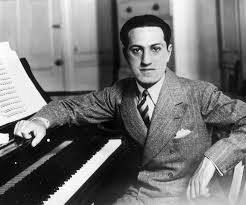 George Gershwin was a very normal boy – he was the undisputed roller-skating champion of his neighborhood on the Lower East Side of New York. But one day a young violinist, Max Rosen, played at PS 25. George had not been interested enough to attend the performance, but heard it through the assembly hall window. Gershwin later wrote: “It was, to me, a flashing revelation of beauty.” Max opened the world of music to George, and George taught Max wrestling. Gershwin wrote his first songs while working as a pianist with a music publishing firm; and his first revue “Half Past Eight” opened in 1918. Tragically, George Gershwin did not live to be 40, but his music will live forever. Gershwin was equally at home writing “pop” tunes, such as “Swanee,” “The Man I Love,”
George Gershwin was a very normal boy – he was the undisputed roller-skating champion of his neighborhood on the Lower East Side of New York. But one day a young violinist, Max Rosen, played at PS 25. George had not been interested enough to attend the performance, but heard it through the assembly hall window. Gershwin later wrote: “It was, to me, a flashing revelation of beauty.” Max opened the world of music to George, and George taught Max wrestling. Gershwin wrote his first songs while working as a pianist with a music publishing firm; and his first revue “Half Past Eight” opened in 1918. Tragically, George Gershwin did not live to be 40, but his music will live forever. Gershwin was equally at home writing “pop” tunes, such as “Swanee,” “The Man I Love,”
“‘S Wonderful,” and “I Got Rhythm”; musical comedies like “Oh Kay,” “Girl Crazy”, and “Of Thee I Sing”; serious music: “Rhapsody in Blue,” “Concerto in F,” and “An American in Paris”; and he even pioneered in creating a genuine American folk opera: “Porgy and Bess.” Most of the lyrics for his revues and songs were written by his brother Ira (1896-1983). “Rhapsody in Blue,” commissioned by Paul Whiteman as a “jazz symphony,” made jazz respectable for the American concert stage after it was performed in New York in 1924… and it made Gershwin famous. In less than two decades of productivity, George Gershwin left an indelible impression upon his country’s culture. George Gershwin was inducted into the Jewish-American Hall of Fame in 1972.
Text courtesy of The Jewish-American Hall of Fame.
BARBRA STREISAND
1942
 Barbra Streisand is one of the most commercially successful recording artists in history, having sold more albums than any other female artist. She was born in Brooklyn and began her career singing in nightclubs. Her first album, “The Barbra Streisand Album” (1963), won two Grammys and her first film, “Funny Girl” (1968), earned her an Academy Award for Best Actress. Streisand became the first woman to win an Academy Award for Best Original Song as a composer for “Evergreen,” from the soundtrack of “A Star is Born” (1976). With “Yentl” (1983), she became the first woman ever to produce, direct, write and star in a major motion picture. She is the only artist ever to receive Oscar, Tony, Emmy, Grammy, Directors Guild of America, Golden Globe, National Endowment for the Arts, and Peabody Awards, as well as the American Film Institute’s Lifetime Achievement Award. She is the first female director to receive The Kennedy Center Honors. Since founding the Streisand Foundation in 1981, she has raised and distributed $21 million to organizations supporting environmental issues, constitutional rights, AIDS research, women’s issues, and race relations, and has raised approximately $20 million, through performances and appearances, for additional causes and charities.
Barbra Streisand is one of the most commercially successful recording artists in history, having sold more albums than any other female artist. She was born in Brooklyn and began her career singing in nightclubs. Her first album, “The Barbra Streisand Album” (1963), won two Grammys and her first film, “Funny Girl” (1968), earned her an Academy Award for Best Actress. Streisand became the first woman to win an Academy Award for Best Original Song as a composer for “Evergreen,” from the soundtrack of “A Star is Born” (1976). With “Yentl” (1983), she became the first woman ever to produce, direct, write and star in a major motion picture. She is the only artist ever to receive Oscar, Tony, Emmy, Grammy, Directors Guild of America, Golden Globe, National Endowment for the Arts, and Peabody Awards, as well as the American Film Institute’s Lifetime Achievement Award. She is the first female director to receive The Kennedy Center Honors. Since founding the Streisand Foundation in 1981, she has raised and distributed $21 million to organizations supporting environmental issues, constitutional rights, AIDS research, women’s issues, and race relations, and has raised approximately $20 million, through performances and appearances, for additional causes and charities.
IRVING BERLIN
1888-1989
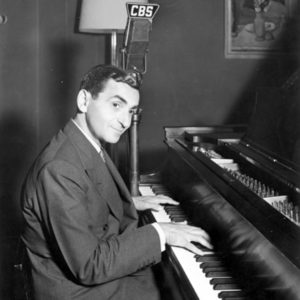 Leave it to a Jewish immigrant from Russia to write the most popular Christmas song ever recorded. Indeed, extraordinary song-writing success followed Berlin throughout his career. Berlin grew up on New York’s Lower East Side. He launched his career in 1911 with the Tin Pan Alley hit “Alexander’s Ragtime Band,” which stayed on the charts for five decades. Over the years he wrote more than 900 other songs, including “God Bless America,” “There’s No Business Like Show Business,” “Easter Parade,” and, of course, “White Christmas.” Berlin also composed eighteen film scores and 21 Broadway scores, including “Annie Get Your Gun” (1946). His impact on culture and the art of popular songwriting endures to this day.
Leave it to a Jewish immigrant from Russia to write the most popular Christmas song ever recorded. Indeed, extraordinary song-writing success followed Berlin throughout his career. Berlin grew up on New York’s Lower East Side. He launched his career in 1911 with the Tin Pan Alley hit “Alexander’s Ragtime Band,” which stayed on the charts for five decades. Over the years he wrote more than 900 other songs, including “God Bless America,” “There’s No Business Like Show Business,” “Easter Parade,” and, of course, “White Christmas.” Berlin also composed eighteen film scores and 21 Broadway scores, including “Annie Get Your Gun” (1946). His impact on culture and the art of popular songwriting endures to this day.
MICHAEL TILSON THOMAS
1944
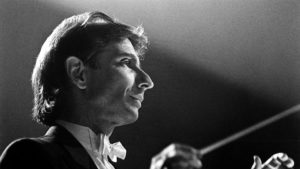 Conductor, composer, and pianist Michael Tilson Thomas is currently music director of the San Francisco Symphony. The grandson of Yiddish theater icons Bessie and Boris Thomashefsky, Tilson Thomas studied at the University of Southern California and, at age 19, was named music director of the Young Musicians Foundation Debut Orchestra. In 1969, after winning the Koussevitzky Prize at Tanglewood, Tilson Thomas was appointed assistant conductor of the Boston Symphony Orchestra, and he went on to become principal conductor of the London Symphony Orchestra. Considered the foremost living interpreter of the works of Aaron Copland, Tilson Thomas has made more than 120 recordings.
Conductor, composer, and pianist Michael Tilson Thomas is currently music director of the San Francisco Symphony. The grandson of Yiddish theater icons Bessie and Boris Thomashefsky, Tilson Thomas studied at the University of Southern California and, at age 19, was named music director of the Young Musicians Foundation Debut Orchestra. In 1969, after winning the Koussevitzky Prize at Tanglewood, Tilson Thomas was appointed assistant conductor of the Boston Symphony Orchestra, and he went on to become principal conductor of the London Symphony Orchestra. Considered the foremost living interpreter of the works of Aaron Copland, Tilson Thomas has made more than 120 recordings.
FANNY BRICE
1891-1951
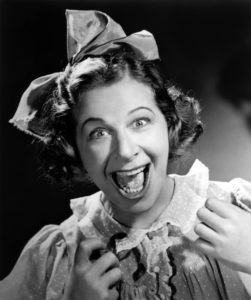 One of America’s great clowns, Fanny Brice built her career on a Yiddish accent and a flair for zany parody. In an era when ethnic comedy was the norm, she delighted audiences for more than forty years and won a following in almost every branch of American show business. During the fourth decade of her professional life, she became precocious radio brat “Baby Snooks,” and that is the role for which she is most often remembered. Yet “Snooks” was only one of Brice’s many inimitable characters in radio, the last of the entertainment forms in which her comic genius found expression. Before focusing exclusively on “the airwaves,” she appeared in burlesque and vaudeville, drama, film, and musical revues (including nine Ziegfeld Follies between 1910 and 1936). Brooks Atkinson, longtime drama critic of the New York Times, called Brice “a burlesque comic of the rarest vintage” and acknowledged her achievement in comedy, a field men had previously dominated.
One of America’s great clowns, Fanny Brice built her career on a Yiddish accent and a flair for zany parody. In an era when ethnic comedy was the norm, she delighted audiences for more than forty years and won a following in almost every branch of American show business. During the fourth decade of her professional life, she became precocious radio brat “Baby Snooks,” and that is the role for which she is most often remembered. Yet “Snooks” was only one of Brice’s many inimitable characters in radio, the last of the entertainment forms in which her comic genius found expression. Before focusing exclusively on “the airwaves,” she appeared in burlesque and vaudeville, drama, film, and musical revues (including nine Ziegfeld Follies between 1910 and 1936). Brooks Atkinson, longtime drama critic of the New York Times, called Brice “a burlesque comic of the rarest vintage” and acknowledged her achievement in comedy, a field men had previously dominated.
RICHARD RODGERS
1902-1979
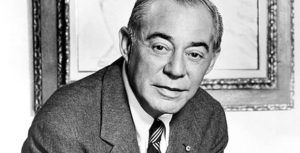 Richard Rodgers, best known for his partnership with lyricists Lorenz Hart and Oscar Hammerstein II, composed music for more than 900 songs and forty Broadway musicals. With Hart, he produced the musical “Babes in Arms” (1937). “Oklahoma!” (1943), the first Rodgers and Hammerstein musical, introduced a new genre to the theater world- the musical play. The successful duo also produced the Pulitzer Prize-winning “South Pacific” (1949), “The King and I” (1951), and “The Sound of Music” (1959). Rodgers and composer Marvin Hamlisch share the distinction of being the only persons to have won an Oscar, a Grammy, an Emmy, a Tony, and a Pulitzer Prize.
Richard Rodgers, best known for his partnership with lyricists Lorenz Hart and Oscar Hammerstein II, composed music for more than 900 songs and forty Broadway musicals. With Hart, he produced the musical “Babes in Arms” (1937). “Oklahoma!” (1943), the first Rodgers and Hammerstein musical, introduced a new genre to the theater world- the musical play. The successful duo also produced the Pulitzer Prize-winning “South Pacific” (1949), “The King and I” (1951), and “The Sound of Music” (1959). Rodgers and composer Marvin Hamlisch share the distinction of being the only persons to have won an Oscar, a Grammy, an Emmy, a Tony, and a Pulitzer Prize.
AARON COPLAND
1900-1990
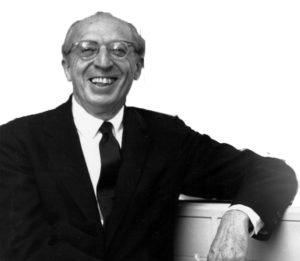 One of the most celebrated classical composers of the twentieth century, Aaron Copland came to be known as “the dean of American composers.” Born in Brooklyn to Jewish immigrants from Lithuania, Copland decided to become a composer at age 15. His early work was heavily influenced by jazz, but he later interwove folk themes into his classical compositions. Copland composed the scores for such films as “Our Town” (1940) and “The Heiress” (1949), which won the Academy Award for Best Music in 1950. In 1942 Copland composed the patriotic orchestral work “Lincoln Portrait,” which included readings of Abraham Lincoln’s letters and speeches. His score for Martha Graham’s ballet “Appalachian Spring” (1944) won the Pulitzer Prize. Copland received the Congressional Gold Medal in 1987.
One of the most celebrated classical composers of the twentieth century, Aaron Copland came to be known as “the dean of American composers.” Born in Brooklyn to Jewish immigrants from Lithuania, Copland decided to become a composer at age 15. His early work was heavily influenced by jazz, but he later interwove folk themes into his classical compositions. Copland composed the scores for such films as “Our Town” (1940) and “The Heiress” (1949), which won the Academy Award for Best Music in 1950. In 1942 Copland composed the patriotic orchestral work “Lincoln Portrait,” which included readings of Abraham Lincoln’s letters and speeches. His score for Martha Graham’s ballet “Appalachian Spring” (1944) won the Pulitzer Prize. Copland received the Congressional Gold Medal in 1987.
PAUL SIMON
1941
 As one half of the folk-rock duo Simon & Garfunkel and as a solo artist, Paul Simon has put his stamp on American music. Between 1964 and 1970, Simon and Garfunkel released such memorable songs as “The Sounds of Silence,” “The Boxer,” “Bridge Over Troubled Water,” and “Mrs. Robinson,” which became the breakout hit of the 1967 movie “The Graduate.” When the duo split, Simon began experimenting with various styles, including reggae and South African music on the Grammy-winning album “Graceland.” Inducted twice into the Rock and Roll Hall of Fame, Simon received the first Library of Congress Gershwin Prize for Popular Song in 2009.
As one half of the folk-rock duo Simon & Garfunkel and as a solo artist, Paul Simon has put his stamp on American music. Between 1964 and 1970, Simon and Garfunkel released such memorable songs as “The Sounds of Silence,” “The Boxer,” “Bridge Over Troubled Water,” and “Mrs. Robinson,” which became the breakout hit of the 1967 movie “The Graduate.” When the duo split, Simon began experimenting with various styles, including reggae and South African music on the Grammy-winning album “Graceland.” Inducted twice into the Rock and Roll Hall of Fame, Simon received the first Library of Congress Gershwin Prize for Popular Song in 2009.
STEPHEN SONDHEIM
1930
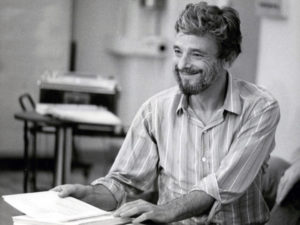 One of the greatest artists in American musical theater, composer/lyricist Stephen Sondheim burst onto the scene in 1957 as Leonard Bernstein’s lyricist for the hit musical “West Side Story.” Sondheim stretched the creative possibilities of the Broadway musical in shows such as “A Little Night Music” (1973), “Sweeney Todd” (1979), and “Into the Woods” (1987). He has won more than 60 individual and collaborative Tony Awards, numerous Grammy Awards, an Academy Award, and a Pulitzer Prize. Sondheim won the American Academy of Arts and Letters’ Gold Medal for Music in 2006, and received a Special Tony Award for Lifetime Achievement in the Theatre in 2008.
One of the greatest artists in American musical theater, composer/lyricist Stephen Sondheim burst onto the scene in 1957 as Leonard Bernstein’s lyricist for the hit musical “West Side Story.” Sondheim stretched the creative possibilities of the Broadway musical in shows such as “A Little Night Music” (1973), “Sweeney Todd” (1979), and “Into the Woods” (1987). He has won more than 60 individual and collaborative Tony Awards, numerous Grammy Awards, an Academy Award, and a Pulitzer Prize. Sondheim won the American Academy of Arts and Letters’ Gold Medal for Music in 2006, and received a Special Tony Award for Lifetime Achievement in the Theatre in 2008.
BEVERLY SILLS
1929-2007
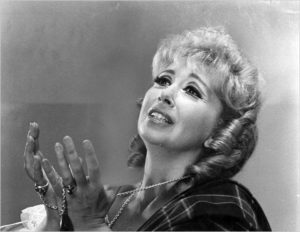 Soprano Beverly “Bubbles” Sills began her career as a child, singing for bar mitzvahs and on the radio. An icon of American opera, she made her debut in 1947 with the Philadelphia Civic Opera and went on to perform around the world in works such as “The Barber of Seville” and “La Traviata”. After retiring from the stage in 1980, Sills became general manager of the New York City Opera. In 1994 she became the first woman and first performer to serve as chairperson of the Lincoln Center for the Performing Arts. From 2002 to 2005 she was chair of the Metropolitan Opera. Sills received three Grammy nominations, five Emmy nominations, and five major awards for her humanitarian and charitable work, notably for her efforts for the prevention and treatment of birth defects.
Soprano Beverly “Bubbles” Sills began her career as a child, singing for bar mitzvahs and on the radio. An icon of American opera, she made her debut in 1947 with the Philadelphia Civic Opera and went on to perform around the world in works such as “The Barber of Seville” and “La Traviata”. After retiring from the stage in 1980, Sills became general manager of the New York City Opera. In 1994 she became the first woman and first performer to serve as chairperson of the Lincoln Center for the Performing Arts. From 2002 to 2005 she was chair of the Metropolitan Opera. Sills received three Grammy nominations, five Emmy nominations, and five major awards for her humanitarian and charitable work, notably for her efforts for the prevention and treatment of birth defects.
BOB DYLAN
1941
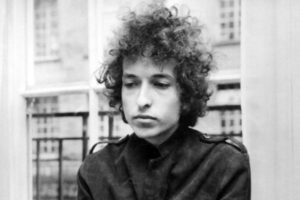 “Bob Dylan is the uncontested poet laureate of the rock and roll era and the preeminent singer/songwriter of modern times,” according to the Rock and Roll Hall of Fame. Much of Dylan’s most celebrated work dates from the 1960s, when songs such as “Blowin’ in the Wind” and “The Times They Are a-Changin’” chronicled American unrest. Dylan’s lyrical compositions defied existing pop-music conventions and explored American song traditions, including folk, blues, and gospel. In 2008, Dylan received a Special Citation by the Pulitzer Prize jury, making him the first popular musician to receive the honor. The Pulitzer committee recognized his “profound impact on popular music and American culture, marked by lyrical compositions of extraordinary poetic power.” On October 13, 2016, the Nobel Prize committee announced that Dylan would be awarded the Nobel Prize in Literature.
“Bob Dylan is the uncontested poet laureate of the rock and roll era and the preeminent singer/songwriter of modern times,” according to the Rock and Roll Hall of Fame. Much of Dylan’s most celebrated work dates from the 1960s, when songs such as “Blowin’ in the Wind” and “The Times They Are a-Changin’” chronicled American unrest. Dylan’s lyrical compositions defied existing pop-music conventions and explored American song traditions, including folk, blues, and gospel. In 2008, Dylan received a Special Citation by the Pulitzer Prize jury, making him the first popular musician to receive the honor. The Pulitzer committee recognized his “profound impact on popular music and American culture, marked by lyrical compositions of extraordinary poetic power.” On October 13, 2016, the Nobel Prize committee announced that Dylan would be awarded the Nobel Prize in Literature.
MARVIN HAMLISCH
1944-2012
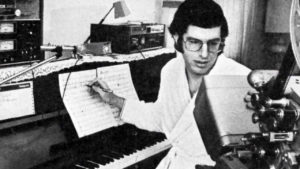 Marvin Hamlisch won four Grammys, three Oscars, three Golden Globes, and one Tony Award. He shares with fellow composer Richard Rodgers the distinction of winning all four of these types of awards plus a Pulitzer Prize – in Hamlisch’s case, for the Broadway blockbuster “A Chorus Line” (1985). Hamlisch composed more than 40 movie scores, including “The Way We Were” (1974), “The Sting” (1974), and “The Spy Who Loved Me” (1977). He served as the musical director and arranger of Barbra Streisand’s 1994 concert tour of the United States and England. He was principal pops conductor for the National Symphony Orchestra, the Pittsburgh Symphony Orchestra, and the Colorado Symphony Orchestra.
Marvin Hamlisch won four Grammys, three Oscars, three Golden Globes, and one Tony Award. He shares with fellow composer Richard Rodgers the distinction of winning all four of these types of awards plus a Pulitzer Prize – in Hamlisch’s case, for the Broadway blockbuster “A Chorus Line” (1985). Hamlisch composed more than 40 movie scores, including “The Way We Were” (1974), “The Sting” (1974), and “The Spy Who Loved Me” (1977). He served as the musical director and arranger of Barbra Streisand’s 1994 concert tour of the United States and England. He was principal pops conductor for the National Symphony Orchestra, the Pittsburgh Symphony Orchestra, and the Colorado Symphony Orchestra.
For more information…
The National Museum of American Jewish History in Philadelphia is the lead sponsor of Jewish American Heritage Month. The JAHM website, www.jahm.us, offers interactive content and educational resources to facilitate nationwide engagement. It also provides updated information on events and myriad ways to connect to JAHM nationally: communities can submit their related events to the calendar, dive into musical resources from the Milken Archive of Jewish Music and the Library of Congress, download and share the pdf of the booklet or contact astuble@nmajh.org to request hard copies, and more.
For an in-depth look at individuals such as Leonard Bernstein, visit exhibitions like Leonard Bernstein: The Power of Music on view through September 2, 2018 at NMAJH.







 Southern New England Jewish Ledger
Southern New England Jewish Ledger
